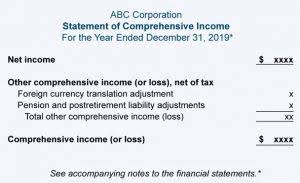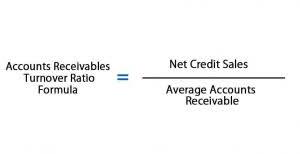
Any change in the Common Stock, Retained Earnings, or Dividends accounts affects total stockholders’ equity, and those changes are shown on the statement of stockholder’s equity. Stockholders’ Equity is sometimes known as the Statement Of Shareholder Equity. It provides a picture of how the firm is operating, net of all assets and liabilities, to shareholders, investors, or the company’s owner.
What Happens When There Is Not Enough Cash Flow or Assets On Hand to Cover Liabilities?
- These items impact equity but are not included in net income until they’re realized.
- If a business has more liabilities than assets or does not have enough stockholders’ equity to cover its debt, then it will need to turn to outside sources of capital.
- Total equity is what is left over after you subtract the value of all the liabilities of a company from the value of all of its assets.
- The book value of an asset is the amount of cost in its asset account less the accumulated depreciation applicable to the asset.
- If a corporation disposes of an asset that is no longer used in its business, the amount received should not be included in its sales revenues.
- Using Excel, a template, or accounting software that automates much of the process, business owners can prepare a tangible Statement Of Shareholder Equity to insert into the balance sheet.
- However, it is also necessary to present additional information about changes in other equity accounts.
For additional guidance, there are many free, editable templates available online to download and customize when constructing your company’s statement of stockholders’ equity. Careful preparation of this statement and review of equity changes will help assess financial strength and Accounting for Churches shareholder returns over time. Movement or changes in the capital structure and value is captured in the Stockholders’ equity statement. Here is an example of how to prepare a statement of stockholder’s equity from our unadjusted trial balance and financial statements used in the accounting cycle examples for Paul’s Guitar Shop.
Statement Of Stockholders’ Equity
- A class of corporation stock that provides for preferential treatment over the holders of common stock in the case of liquidation and dividends.
- This one-year period of time (or time interval) is referred to as a calendar year.
- To arrive at the total book value of the common stock, we first compute the total book value of the preferred stock, and then subtract that amount from the total stockholders’ equity.
- Nowhere on the stock certificate is it indicated what the stock is worth (or what price was paid to acquire it).
- Holders of preferred stock do not have voting rights in the issuing company.
- As a result the $9,000 decrease in accounts payable will appear in parentheses on the SCF.
Paid-in capital (or contributed capital) is that section of stockholders’ equity that reports the amount a corporation received when it issued its shares recording transactions of stock. Because of legal requirements, the stockholders’ equity section of a corporation’s balance sheet is more expansive than the owner’s equity section of a sole proprietorship’s balance sheet. For example, state laws require that corporations keep the amounts received from investors separate from the amounts earned through business activity.

A statement of shareholder equity can help you make financial decisions.
To illustrate, let’s assume that 1,000 shares of common stock are exchanged for a parcel of land. The stock is publicly traded and recent trades have been at $35 per share. The land’s fair market value is not as clear since there has not been a comparable sale during the past four years.

The positive amounts in this section of the SCF indicate the cash inflows or proceeds from the sale of property, plant and equipment and/or other long-term assets. The exact calculation and total depends on what is included as an asset and liability, but it always represents the amount of money available to the business, either to pay off liabilities or reinvest in its operations. While this figure does include money that could be returned to the owners of the company, it also includes items like depreciation and amortization, which cannot be directly distributed to shareholders. This is often done by either borrowing money or issuing shares of stock, both of which can result in additional obligations. If a business has more liabilities than assets or does not have enough stockholders’ equity to cover its debt, then it will need to turn to outside sources of capital. Because the number of shares is reduced in buybacks, shareholders’ equity generally declines.
- However, those separate legal corporations (called subsidiaries) are owned and controlled by one of the corporations (the parent corporation).
- This is why the statement of changes in equity must be prepared after the income statement.
- Assuming the net income was $100,000 it is listed first and is followed by many adjustments to convert the net income (computed under the accrual method of accounting) to the approximate amount of cash.
- As you can see, the beginning equity is zero because Paul just started the company this year.
- The stock is publicly traded and recent trades have been at $35 per share.
- Also assume it is cumulative preferred and three years of omitted dividends are owed.
First, the beginning equity is reported followed by any new investments from shareholders along with net income for the year. Second all dividends and net losses are subtracted from the equity balance giving you the ending equity balance for the accounting period. Gains and losses that arise due to revaluation during the period must be presented in the statement of stockholder’s equity to the extent that they are recognized outside the statement of comprehensive income. The net income from operations and other business activities maintained by a firm as additional equity capital is referred to as retained earnings (RE). If a profitable company’s retained earnings are not paid to shareholders, they will exhibit a growing trend. The fluctuation of retained earnings is captured in the stockholder’s equity statement.

Ask Any Financial Question
The articles and research support materials available on this site are educational and are not intended to be investment or tax advice. All such information is provided solely for convenience purposes only and all users thereof should be guided accordingly. 11 Financial is a registered investment adviser located in Lufkin, Texas. 11 Financial may only transact business in those states in which it is registered, or qualifies for an exemption or exclusion from registration requirements. 11 Financial’s website is limited to the dissemination of general information pertaining to its advisory services, together with access to additional investment-related information, publications, and links. Finance Strategists has an advertising relationship with some of the companies included on this website.
Who uses a statement of shareholder equity?
At the statement of stockholders equity balance sheet date, the corporation had cumulative net income after income taxes of $40,000 and had paid cumulative dividends of $12,000, resulting in retained earnings of $28,000. The statement of stockholder’s equity displays all equity accounts that affect the ending equity balance including common stock, net income, paid in capital, and dividends. This in depth view of equity is best demonstrated in the expanded accounting equation. One of the main financial statements (along with the income statement and balance sheet). The statement of cash flows reports the sources and uses of cash by operating activities, investing activities, financing activities, and certain supplemental information for the period specified in the heading of the statement. It is common for a large business to consist of several legal corporations.
How confident are you in your long term financial plan?
Although the 2-for-1 stock split is typical, directors may authorize other stock split ratios, such as a 3-for-2 stock split or a 4-for-1 stock split. For instance, let’s assume ABC Corporation began the year with an opening equity balance of $100,000. “Business owners overlook the Statement Of Shareholder Equity because they don’t understand it”, Steinhoff explained more. “However, it is easier to invest the time in educating yourself, whether through online research, speaking with an advisor, or finding a mentor.”This is very crucial. For example, a school district might have a fiscal year of July 1, 2023 through June 30, 2024.